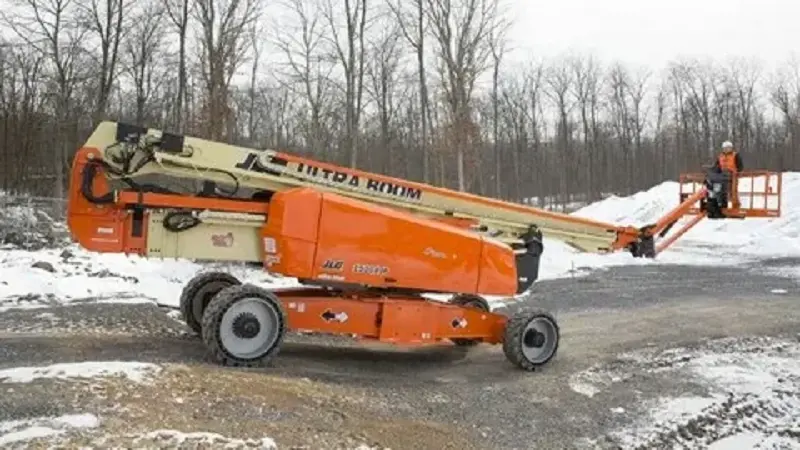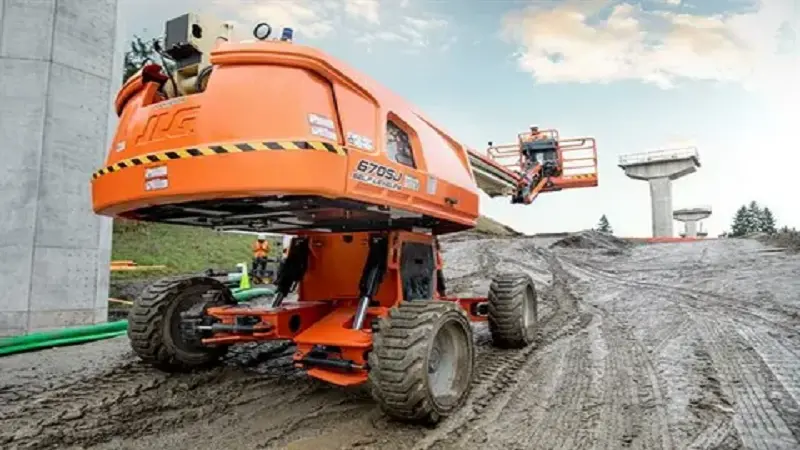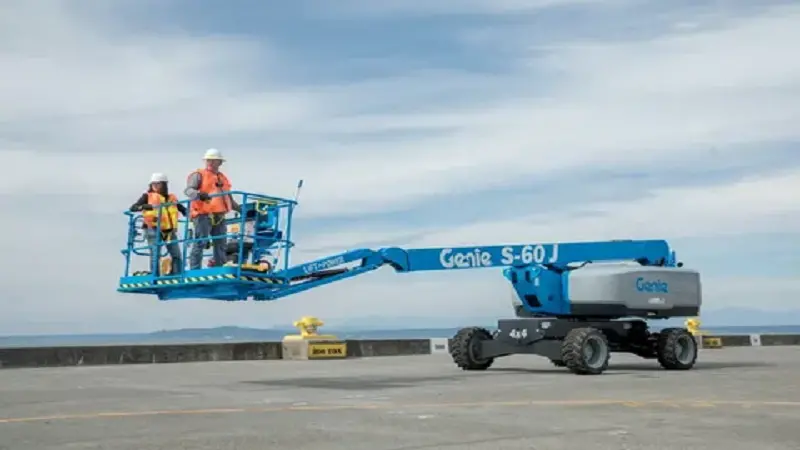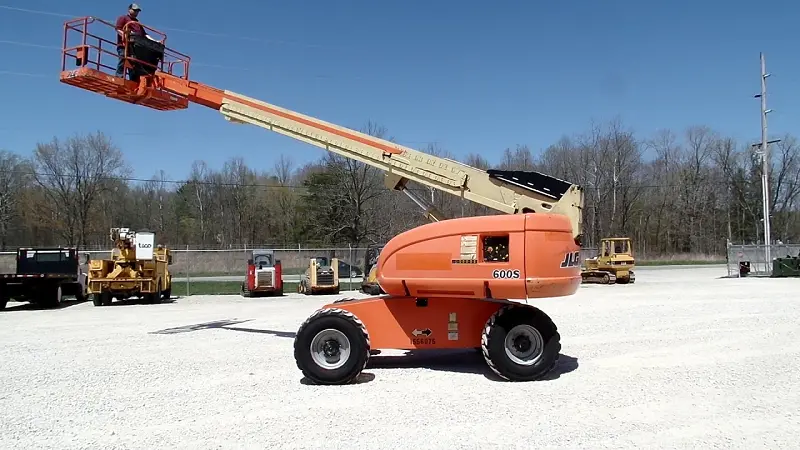Comprehensive Guide to Safely Operating a Boom Lift
Introduction
Boom lifts, also known as aerial work platforms or telescopic boom lifts, have become an essential piece of equipment across various industries, including construction, maintenance, and facilities management. These versatile machines allow workers to safely access elevated work areas, perform tasks at heights, and tackle complex projects with greater efficiency and safety.
However, operating a boom lift requires specialized knowledge and meticulous attention to safety protocols. Improper use or neglect of safety measures can lead to serious accidents, property damage, and even loss of life. That’s why it’s crucial for anyone who operates a boom lift to undergo comprehensive training and adhere to best practices for safe and effective operation.
In this comprehensive guide, we’ll dive deep into the world of boom lift operation, covering everything from pre-operation inspections and setup to navigating worksite challenges and performing proper maintenance. Whether you’re a seasoned boom lift operator or just starting out, this guide will equip you with the knowledge and skills necessary to handle these powerful machines with confidence and care.
The Critical Importance of Boom Lift Expertise
Boom lifts are more than just pieces of construction equipment—they’re complex machines that require specialized knowledge, precision, and an unwavering commitment to safety. Whether you’re working in construction, maintenance, or industrial settings, understanding how to operate an aerial lift correctly can mean the difference between a successful project and a potential disaster.
This comprehensive guide will walk you through everything you need to know about boom lift operation, from fundamental techniques to advanced safety protocols. We’ll dive deep into the world of elevated work platforms, providing you with the knowledge to operate these machines confidently and professionally.
Understanding Boom Lift Fundamentals
Types of Boom Lifts: More Than Meets the Eye
Boom lifts come in several critical varieties, each designed for specific workplace challenges:
| Lift Type | Key Characteristics | Primary Applications |
| Telescopic Boom Lift | Straight, extendable arm | High-reach construction, exterior building maintenance |
| Articulating Boom Lift | Jointed, flexible arm | Complex access points, tight spaces, indoor maintenance |
| Towable Boom Lift | Portable, road-transportable | Temporary job sites, remote locations |
Pre-Operation Inspection and Setup

Conducting a Thorough Visual Inspection
Before even starting the engine, it’s essential to perform a thorough visual inspection of the boom lift. This critical step helps identify any potential issues or hazards that could compromise the safety and performance of the equipment.
Begin by walking around the entire boom lift, examining the following key components:
- Tires and Wheels: Check the tires for any signs of damage, wear, or proper inflation. Ensure the wheels are securely attached and free of any debris or obstructions.
- Hydraulic Fluid Levels: Inspect the hydraulic fluid levels and top them up if necessary, as per the manufacturer’s recommendations.
- Emergency Stop Buttons: Verify that the emergency stop buttons are in good working condition and easily accessible.
- Outriggers and Stabilizers: Ensure the outriggers and stabilizers are in proper working order and can be deployed effectively.
- Structural Components: Visually inspect the boom, platform, and other structural components for any cracks, dents, or signs of wear and tear.
- Safety Devices: Check the proper functioning of safety devices, such as the platform entrance bar, tilt sensors, and the load capacity indicator.
Preparing the Work Area
Once the visual inspection is complete, it’s time to assess the work area and ensure it is suitable for boom lift operation. Consider the following factors:
- Ground Conditions: Inspect the ground surface to identify any uneven terrain, soft soil, or other hazards that could affect the stability and operation of the boom lift.
- Overhead Obstructions: Carefully examine the work area for any overhead power lines, trees, or other obstacles that could interfere with the boom lift’s reach and movement.
- Proximity to Hazards: Identify any potential hazards in the immediate vicinity, such as drop-offs, excavations, or vehicular traffic, and take appropriate precautions.
- Clearance and Maneuvering Space: Ensure there is sufficient clearance and maneuvering space around the boom lift to allow for safe operation and access to the work area.
Completing Pre-Operation Checks
Before starting the boom lift, perform a series of pre-operation checks to ensure all systems are functioning correctly and safely. These checks typically include:
- Fuel and Fluid Levels: Verify that the fuel tank is full, and all fluid levels (engine oil, hydraulic fluid, coolant, etc.) are within the recommended range.
- Control Functions: Test all control functions, including the ground controls, basket controls, and emergency stop buttons, to ensure they are responsive and working as intended.
- Safety Features: Inspect the proper functioning of safety features, such as the platform entrance bar, tilt sensors, and the load capacity indicator.
- Fall Protection Equipment: Ensure that all personal protective equipment (PPE), including harnesses and lanyards, is in good condition and properly secured.
By meticulously completing these pre-operation checks, you can significantly reduce the risk of accidents and ensure the safe and reliable operation of the boom lift.
Operating the Boom Lift

From the Ground
Once the pre-operation checks are complete, it’s time to start the boom lift engine and begin the operation. The first step is to familiarize yourself with the ground controls, which allow you to maneuver the boom lift without being in the elevated platform.
The ground controls typically include:
- Engine Start/Stop: The controls to start and stop the boom lift’s engine.
- Boom Raise/Lower: The controls to raise and lower the boom.
- Boom Extend/Retract: The controls to extend and retract the boom.
- Platform Rotate: The controls to rotate the platform left or right.
- Drive and Steer: The controls to drive the boom lift forward, backward, and steer it.
Carefully operate the ground controls to position the boom lift in the desired location, ensuring that the outriggers or stabilizers are properly deployed to provide a stable and level platform.
From the Basket
Once the boom lift is in position, it’s time to access the elevated work platform, also known as the basket. Follow these steps to safely enter and operate the boom lift from the basket:
- Secure Fall Protection: Attach your safety harness and lanyard to the designated anchorage points within the platform, ensuring a secure connection.
- Platform Entry: Carefully step into the platform, keeping three points of contact (two hands and one foot, or two feet and one hand) at all times.
- Familiarize with Controls: Acquaint yourself with the basket controls, which typically include buttons or joysticks for boom raise/lower, boom extend/retract, and platform rotation.
- Operate Cautiously: Use the basket controls to position the platform as needed, maintaining a firm grip and awareness of your surroundings. Avoid sudden or jerky movements, and adjust your speed based on the task at hand.
- Monitor Load Capacity: Continuously monitor the load capacity indicator to ensure you do not exceed the maximum weight limit for the platform.
- Communicate with Ground Crew: Establish clear communication with the ground crew, if present, to coordinate movements and ensure the safety of everyone involved.
Remember, safety should always be the top priority when operating a boom lift from the basket. Stay alert, maintain a stable stance, and never lean or reach beyond the platform’s perimeter.
Safety Considerations
Boom Lift Safety Features
Boom lifts are equipped with a range of safety features designed to protect operators and ensure the safe execution of elevated work tasks. These features include:
- Emergency Stop Buttons: Strategically placed emergency stop buttons, both on the ground and in the basket, allow the operator to immediately shut down the boom lift in case of an emergency.
- Tilt Sensors: Tilt sensors constantly monitor the stability of the boom lift and will automatically stop or limit operation if the machine exceeds a predetermined tilt angle, preventing tip-overs.
- Overload Sensing: Load sensing systems monitor the weight in the basket and will restrict or prevent operation if the load capacity is exceeded, reducing the risk of structural failure.
- Platform Entrance Bar: The platform entrance bar serves as a safety gate, preventing accidental falls from the elevated work area.
- Outriggers and Stabilizers: Properly deployed outriggers and stabilizers enhance the overall stability and support of the boom lift, increasing its operating range and load capacity.
Understanding and properly utilizing these safety features is crucial for safe and effective boom lift operation.
Navigating Worksite Challenges
Operating a boom lift often requires navigating various worksite challenges, including:
- Overhead Obstructions: Be vigilant of overhead power lines, trees, and other obstacles that could interfere with the boom lift’s reach and movement. Maintain a safe distance and plan your work accordingly.
- Uneven Terrain: Carefully assess the ground conditions and adjust the outriggers or stabilizers to ensure a stable and level platform. Avoid operating the boom lift on soft or sloping surfaces that could compromise its stability.
- Adverse Weather Conditions: Monitor weather conditions, such as high winds, rain, or snow, and adjust your operation accordingly. Strong winds can significantly impact the stability and control of the boom lift.
- Proximity to Hazards: Maintain a safe distance from drop-offs, excavations, and other potential hazards in the work area. Use barricades, signage, or a spotter to ensure the safety of both the operator and ground personnel.
- Worksite Traffic: If the boom lift is operating in an area with vehicle or pedestrian traffic, coordinate with ground crew and implement appropriate traffic control measures to avoid collisions.
By anticipating and addressing these challenges, you can ensure the safe and successful completion of your elevated work tasks.
Maintenance and Storage
Proper Shutdown Procedures
After completing your work, it’s crucial to follow proper shutdown procedures to ensure the boom lift is secured and ready for its next use. This includes:
- Lowering the Platform: Carefully lower the boom lift platform to the ground, ensuring a smooth and controlled descent.
- Securing the Boom: Retract the boom and secure it in the designated transport position, as specified by the manufacturer.
- Parking and Braking: Park the boom lift on a level surface and engage the parking brake to prevent unintended movement.
- Powering Down: Turn off the engine and remove the key to prevent unauthorized use.
- Performing a Final Inspection: Conduct a final visual inspection of the boom lift, looking for any damage or issues that may need to be addressed before the next use.
Regular Maintenance and Inspections
Proper maintenance and regular inspections are essential for ensuring the continued safe and reliable operation of your boom lift. This includes:
- Scheduled Maintenance: Follow the manufacturer’s recommended maintenance schedule, which may include tasks such as:
- Changing engine oil and filters
- Lubricating moving parts
- Inspecting and replacing hydraulic fluid
- Checking and adjusting tire pressure
- Periodic Inspections: In addition to the daily pre-operation checks, conduct more comprehensive inspections at regular intervals, such as monthly or quarterly, to identify any potential issues or wear and tear.
- Replacement of Worn Parts: Promptly replace any worn or damaged components, such as tires, hoses, or structural elements, to maintain the boom lift’s integrity and safety.
- Recordkeeping: Maintain detailed records of all maintenance activities, inspections, and any repairs performed on the boom lift. This documentation can be valuable in ensuring compliance with regulations and identifying patterns of wear and tear.
By diligently maintaining your boom lift and following the manufacturer’s recommendations, you can extend its lifespan, optimize its performance, and ensure the safety of all who operate it.

Top 10 Boom Lift Models
As the construction and industrial sectors continue to demand more versatile and efficient equipment, the boom lift market has expanded with a variety of models to choose from. Here are 10 of the top boom lift options on the market:
Genie S-60 Boom Lift
The Genie S-60 is a popular choice for a wide range of applications, offering a working height of up to 66 feet and a horizontal reach of 52 feet. Its compact size and excellent maneuverability make it well-suited for both indoor and outdoor use.
JLG 600AJ Boom Lift
The JLG 600AJ boasts an impressive working height of 60 feet and a horizontal reach of 40 feet, making it a versatile option for tasks such as building maintenance, construction, and facility management. Its sturdy build and reliable performance make it a favorite among industry professionals.
Skyjack SJ63 AJ Boom Lift
The Skyjack SJ63 AJ offers a maximum working height of 69 feet and a horizontal reach of 51 feet, providing ample access for a wide range of elevated work tasks. Its user-friendly controls and excellent stability make it a reliable choice for both indoor and outdoor use.
Snorkel TB-60 Boom Lift
The Snorkel TB-60 is a compact and maneuverable boom lift with a working height of 66 feet and a horizontal reach of 52 feet. Its narrow width and tight turning radius make it well-suited for working in confined spaces, such as warehouses or construction sites.
Manitou 160 ATJ Boom Lift
The Manitou 160 ATJ boasts a maximum working height of 52 feet and a horizontal reach of 45 feet, making it a versatile option for a variety of applications. Its robust construction and smooth operation have made it a popular choice among rental companies and contractors.
Frequently Asked Questions About Boom Lift Operation
What is the weight capacity of a typical boom lift?
The weight capacity of a boom lift can vary greatly depending on the model and specifications. Most compact or towable boom lifts have a maximum weight capacity of around 500-750 lbs in the platform. Larger, self-propelled articulating or telescopic boom lifts can handle up to 1,000-1,500 lbs. It’s crucial to always check the load chart for the specific boom lift you are operating and never exceed the maximum rated capacity.
How high can a boom lift reach?
The working height of a boom lift can range from around 30 feet for the smallest models up to 180 feet or more for the largest heavy-duty units. The exact reach capabilities will depend on the boom type (telescopic or articulating), length, and other design features. It’s important to familiarize yourself with the manufacturer’s specifications to understand the full operating envelope of the boom lift you will be using.
Do I need special training to operate a boom lift?
Yes, formal training is required to safely operate a boom lift. Most jurisdictions mandate that boom lift operators complete a certification program that covers topics like pre-operation inspections, safe driving techniques, load capacity, and emergency procedures. This training ensures operators have the knowledge and skills to handle these machines responsibly and minimize the risk of accidents or injuries.
How stable are boom lifts, and what factors can affect their stability?
Boom lifts are generally very stable when used properly on level, firm ground. However, factors like uneven terrain, high winds, or exceeding the weight capacity can compromise stability and increase the risk of tip-overs. That’s why it’s critical to always deploy the outriggers or stabilizers, avoid operating on sloped surfaces, and monitor weather conditions closely when using a boom lift.
-
How often do boom lifts need to be serviced?
The maintenance schedule for a boom lift will depend on factors like usage, environmental conditions, and the manufacturer’s recommendations. As a general rule, boom lifts should undergo thorough inspections and servicing at least annually, with more frequent check-ups for units that see heavy or continuous use. Regular preventative maintenance, such as hydraulic fluid changes and lubrication of moving parts, is also essential to ensure the reliable and safe operation of the equipment.
Conclusion
Operating a boom lift requires a comprehensive understanding of safety protocols, operational techniques, and maintenance best practices. By following the guidelines outlined in this guide, you can confidently and safely handle these powerful machines, ensuring the successful completion of elevated work tasks while prioritizing the well-being of yourself and those around you.
Remember, proper training, attention to detail, and a steadfast commitment to safety should be the foundation of every boom lift operation. Stay vigilant, communicate effectively, and continuously strive to improve your skills and knowledge. With the right approach, you can harness the full potential of boom lifts and contribute to the success of your projects while maintaining the highest levels of safety.
Mastering boom lift operation is an ongoing journey of education, practice, and unwavering commitment to safety. By understanding these comprehensive guidelines, you’re not just operating equipment—you’re protecting lives and ensuring project success.
Remember: Every lift, every time, safety comes first.

With over 5 years of dedicated experience in the automotive industry, I am passionate about all things automotive. My journey began with a deep curiosity for automobiles, which led me to delve deeper into their mechanics, technology and trends. My expertise spans various aspects of the automotive world, from the latest electric vehicles to classic car restoration techniques. Through my articles, I aim to share my knowledge and insights, helping readers stay informed and inspired in the fast-paced world of the automobile.











